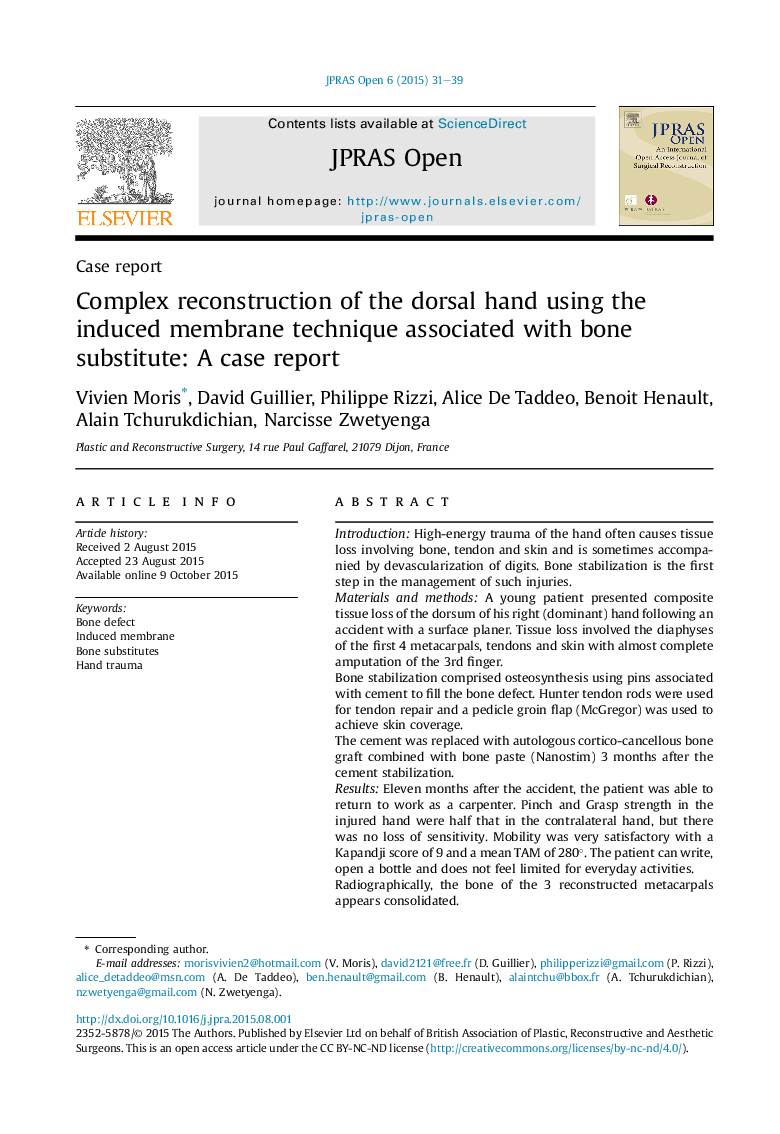| Article ID | Journal | Published Year | Pages | File Type |
|---|---|---|---|---|
| 4305697 | JPRAS Open | 2015 | 9 Pages |
IntroductionHigh-energy trauma of the hand often causes tissue loss involving bone, tendon and skin and is sometimes accompanied by devascularization of digits. Bone stabilization is the first step in the management of such injuries.Materials and methodsA young patient presented composite tissue loss of the dorsum of his right (dominant) hand following an accident with a surface planer. Tissue loss involved the diaphyses of the first 4 metacarpals, tendons and skin with almost complete amputation of the 3rd finger.Bone stabilization comprised osteosynthesis using pins associated with cement to fill the bone defect. Hunter tendon rods were used for tendon repair and a pedicle groin flap (McGregor) was used to achieve skin coverage.The cement was replaced with autologous cortico-cancellous bone graft combined with bone paste (Nanostim) 3 months after the cement stabilization.ResultsEleven months after the accident, the patient was able to return to work as a carpenter. Pinch and Grasp strength in the injured hand were half that in the contralateral hand, but there was no loss of sensitivity. Mobility was very satisfactory with a Kapandji score of 9 and a mean TAM of 280°. The patient can write, open a bottle and does not feel limited for everyday activities.Radiographically, the bone of the 3 reconstructed metacarpals appears consolidated.ConclusionThe induced membrane technique allowed the reconstruction of small bone deficits in the long bones of the hand in a two-step procedure, the first step taking place in an emergency context of composite tissue trauma.
